Impressions on Canvas: Monet's Techniques for Artists
When we think of Claude Monet, images of vibrant gardens, serene water lilies, and captivating sunsets often come to mind. His work is not just a feast for the eyes; it’s a masterclass in technique and emotion. This article dives deep into the revolutionary painting techniques employed by Monet, offering contemporary artists valuable insights that can transform their own work. By understanding his unique approach to color, light, and brushwork, artists today can learn to evoke feelings and capture fleeting moments on canvas, just as Monet did over a century ago.
Monet was a pioneer of the Impressionist movement, a style that sought to capture the essence of a moment rather than a detailed representation. Imagine standing in a sunlit field, the light dancing on the flowers, the wind rustling through the leaves. That’s the feeling Monet aimed to convey in his paintings. He believed that art should reflect the world as it is experienced—full of light, color, and movement. This approach was revolutionary at the time and laid the groundwork for many modern art movements that followed.
One of the most striking aspects of Monet's work is his innovative use of color. He didn’t just paint what he saw; he painted what he felt. His color palette was carefully chosen to evoke specific emotions and create depth. For instance, Monet often used complementary colors to enhance vibrancy and contrast in his landscapes. By layering colors and employing unique mixing techniques, he was able to achieve a luminosity that makes his paintings feel alive. This deliberate choice of colors not only enhances the visual experience but also invites the viewer to connect emotionally with the scene.
Monet’s understanding of light was equally profound. He had an uncanny ability to capture the changing effects of natural light, whether it was the soft glow of dawn or the harsh brightness of midday. His technique of painting en plein air—or outdoors—allowed him to observe and replicate the transient qualities of light directly on his canvas. This method was groundbreaking and allowed him to create works that feel spontaneous and dynamic. Each brushstroke was a reflection of the moment, a snapshot of time that resonates with viewers even today.
As we explore Monet's brushwork techniques, we find that they are as distinctive as his color choices. His use of short, quick strokes created texture and vibrancy, giving life to his subjects. It’s almost as if you can feel the breeze or hear the rustling leaves just by looking at his work. This approach not only adds depth but also conveys a sense of movement, drawing the viewer into the scene. Monet's art invites you to step closer, to immerse yourself in the experience he has captured.
In conclusion, Claude Monet's techniques are not just relics of the past; they are a treasure trove of insights for contemporary artists. By embracing his revolutionary approach to color, light, and brushwork, artists can elevate their own work and create pieces that resonate with emotion and vibrancy. So, whether you’re a seasoned artist or just starting out, remember that every stroke on the canvas has the potential to capture a moment that is uniquely yours.
- What is Impressionism? Impressionism is an art movement that focuses on capturing the momentary effects of light and color, often through spontaneous brushwork.
- How did Monet influence modern art? Monet's techniques, particularly his use of color and light, paved the way for many modern art movements, encouraging artists to explore new ways of seeing and representing the world.
- What materials did Monet use? Monet primarily used oil paints and often painted on large canvases outdoors to capture the natural light and atmosphere.
- Can I apply Monet's techniques to my own art? Absolutely! By experimenting with color mixing, brushwork, and painting outdoors, you can incorporate Monet's techniques into your own artistic practice.
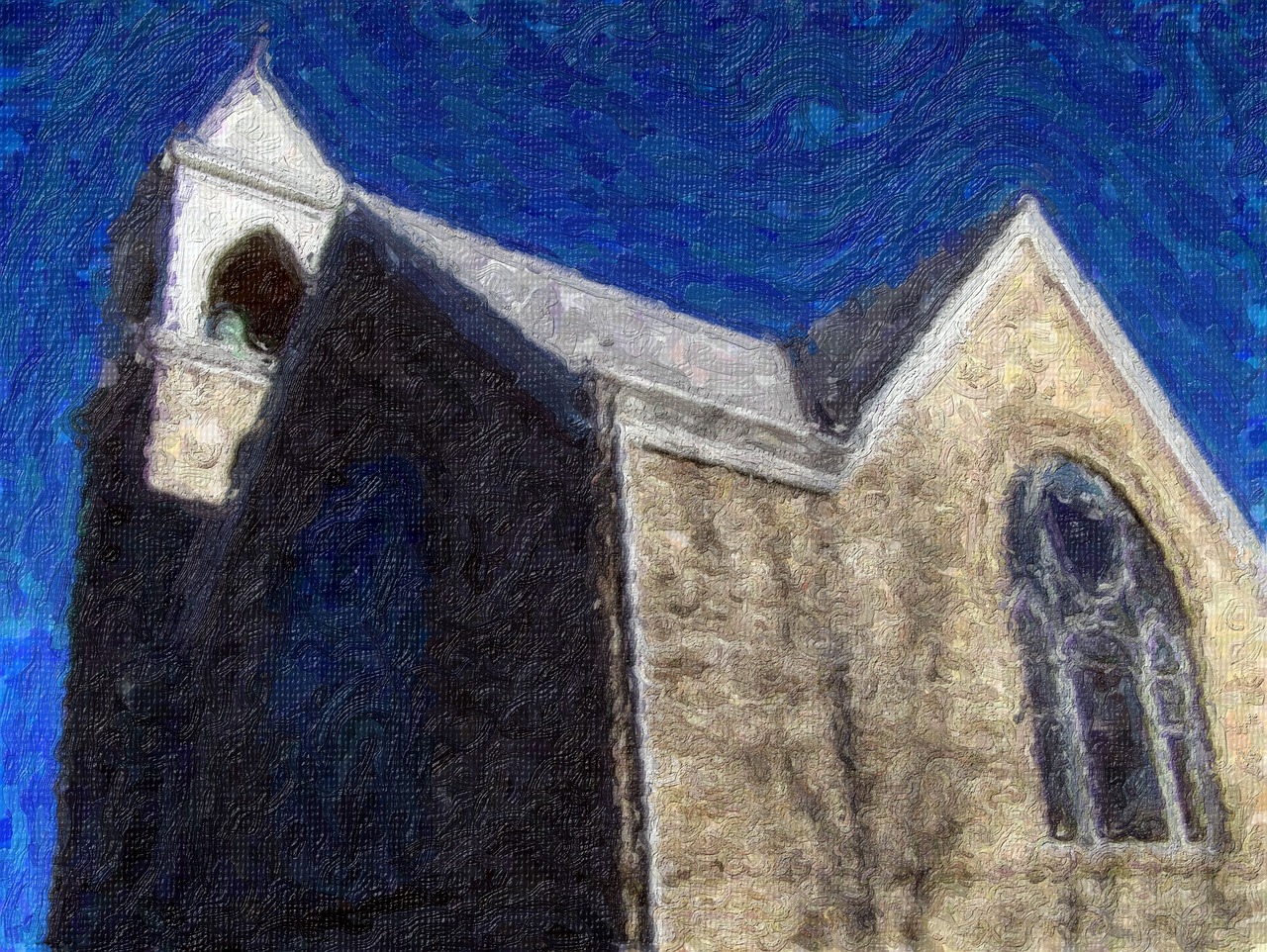
Understanding Impressionism
Impressionism is more than just a style of painting; it's a revolutionary movement that transformed the art world in the late 19th century. This movement broke away from the traditional methods of painting that emphasized realism and detailed representation. Instead, Impressionists sought to capture the essence of a moment, the play of light, and the fleeting nature of time. They focused on portraying their immediate perceptions of a scene, often painting outdoors to capture the changing light and atmosphere. This approach allowed them to convey a sense of spontaneity and movement that was previously unseen in art.
At the heart of Impressionism is the idea of capturing light and its effects on color. Monet, along with his contemporaries, believed that light was not just a backdrop for their subjects but a vital component of the scene itself. They experimented with how different times of day and weather conditions could alter the appearance of colors, shapes, and forms. For instance, a landscape could look entirely different at dawn compared to dusk, and Monet's work often reflects these subtle variations. This focus on light and color created a sense of immediacy and emotion in their paintings, allowing viewers to feel as if they were experiencing the moment alongside the artist.
Moreover, Impressionism is characterized by its loose brushwork and vibrant colors. Artists like Monet used quick, short strokes that often left the canvas visible, creating a texture that invited viewers to engage with the painting more actively. This technique allows the viewer's eye to blend the colors from a distance, creating a sense of movement and life in the artwork. The use of color was also innovative, with artists applying pure hues directly to the canvas rather than mixing them on a palette. This resulted in a luminosity that gave their paintings a dynamic quality.
Monet's role in this movement cannot be overstated. He was a pioneer who not only embraced these principles but also pushed the boundaries of what art could be. His works, such as Impression, Sunrise, which famously gave the Impressionist movement its name, exemplify the core tenets of this style. Through his innovative techniques, Monet invited viewers to experience nature in a new light, encouraging them to see beyond the surface and appreciate the beauty in the ephemeral.
In summary, Impressionism represents a significant shift in how artists perceive and portray the world around them. By focusing on light, color, and the transient nature of moments, artists like Monet created a legacy that continues to inspire and influence contemporary art. Understanding these principles not only enhances our appreciation of Impressionist works but also provides valuable insights for modern artists looking to capture their unique perspectives on the world.

Color Theory in Monet's Work
When you think of Claude Monet, the first thing that likely comes to mind is his stunning use of color. Monet wasn't just painting pretty pictures; he was a master of color theory, using it to evoke emotions and create a sense of depth in his work. Imagine walking through a sun-drenched garden or standing by a shimmering lake; Monet's paintings transport you to those moments, capturing the very essence of nature. His innovative approach to color transformed the landscape of painting, making it more vibrant and expressive than ever before.
One of the key elements of Monet's color theory was his understanding of how colors interact with one another. He often employed a technique known as optical mixing, where he placed contrasting colors side by side. Instead of blending colors on his palette, he allowed the viewer's eye to mix them at a distance. For example, if you look closely at his famous work, "Impression, Sunrise," you'll notice patches of orange and blue that, when viewed from afar, create a harmonious glow that mimics the rising sun. This technique not only added vibrancy but also brought a sense of movement and life to his paintings.
Monet's choice of colors was also deeply emotional. He understood that colors could convey feelings and moods. For instance, his use of soft blues and greens in "Water Lilies" evokes a sense of calm and tranquility, while the fiery reds and yellows in "The Japanese Bridge" convey warmth and energy. Each color was carefully selected to resonate with the viewer's emotions, creating a connection that goes beyond mere visual appeal.
Monet's palette was not just a random collection of colors; it was a carefully curated selection that reflected his artistic vision. He often favored a limited palette, which allowed him to explore the nuances of color without overwhelming the viewer. His typical palette included colors like ultramarine blue, cadmium yellow, and vermilion, which he used to create stunning contrasts and harmonies. The table below illustrates some of the key colors Monet frequently used in his works:
| Color | Hex Code | Description |
|---|---|---|
| Ultramarine Blue | #3F5D99 | A deep, vibrant blue that captures the essence of the sky and water. |
| Cadmium Yellow | #F6EB61 | A bright, sunny yellow that adds warmth and light to his compositions. |
| Vermilion | #E03C31 | A vivid red that brings energy and passion to his paintings. |
By limiting his color choices, Monet was able to create a sense of unity in his works. Each hue played a specific role in the overall composition, contributing to the mood and atmosphere he sought to convey. This strategic use of color is what sets Monet apart from many of his contemporaries and is a lesson for modern artists looking to enhance their own work.
Monet's approach to color mixing was equally revolutionary. He often used a technique called broken color, where he applied small, distinct strokes of color rather than blending them smoothly. This method allowed him to achieve a luminosity that made his paintings feel alive. When you look at a Monet painting, the colors seem to shimmer and dance, much like the light on water. This effect is particularly evident in his series of paintings depicting the same scene at different times of day, such as "Haystacks" and "Rouen Cathedral." Each canvas captures the changing light and atmosphere, showcasing how color can transform a single subject.
In conclusion, Monet's mastery of color theory not only changed the way we perceive landscape painting but also opened the door for future artists to experiment with color in new and exciting ways. His innovative techniques and emotional palette choices continue to inspire artists today, reminding us of the profound impact that color can have on our art and our emotions. So the next time you pick up a brush, think about how you can use color to tell your own story and evoke feelings in your audience.
- What is the significance of color in Monet's work? Monet used color to evoke emotions and create depth, making his paintings feel alive and vibrant.
- How did Monet achieve luminosity in his paintings? He employed techniques like broken color and optical mixing, allowing colors to interact and shimmer.
- What colors did Monet commonly use? He often used ultramarine blue, cadmium yellow, and vermilion to create stunning contrasts and effects.
- Why is Monet considered a pioneer of Impressionism? His revolutionary techniques in capturing light, color, and atmosphere defined the Impressionist movement and influenced countless artists.
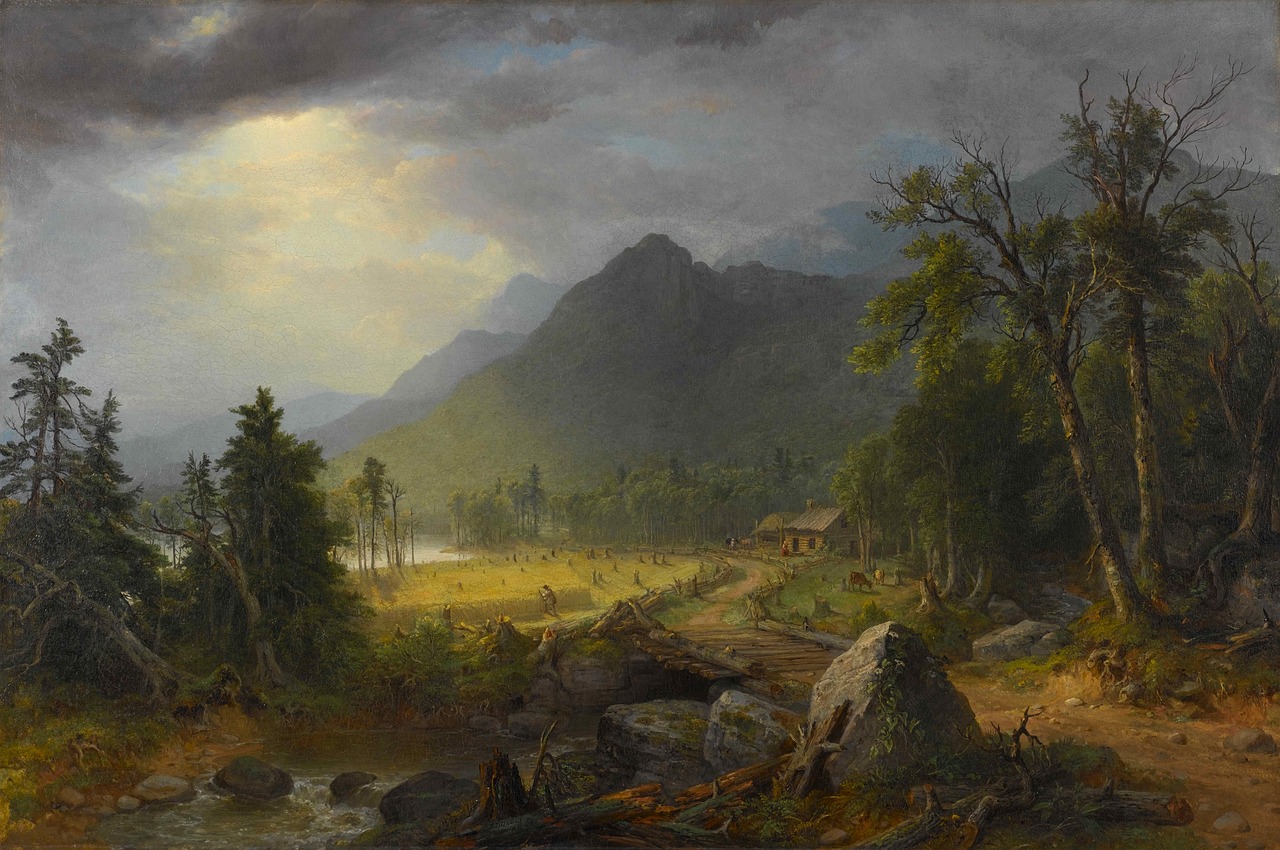
Palette Choices
When we think about Claude Monet, the first thing that often comes to mind is his extraordinary ability to capture the essence of nature through his paintings. A significant part of that brilliance lies in his . Monet was not just a painter; he was a master of color, and every hue he selected was a deliberate decision aimed at evoking specific emotions and responses from the viewer. His palette was a vibrant symphony, combining colors in ways that seemed to dance off the canvas.
Monet frequently employed a limited color palette to create harmony and balance in his works. He understood the power of color theory, which allowed him to mix and match hues to produce stunning visual effects. For instance, he often used complementary colors—those that sit opposite each other on the color wheel—to enhance the vibrancy of his paintings. This technique not only made the colors pop but also created a sense of depth and movement, akin to a gentle breeze rustling through leaves.
To illustrate his palette choices, let’s take a look at some of the colors he commonly used:
| Color | Emotion/Effect |
|---|---|
| Blue | Calmness and tranquility |
| Yellow | Joy and warmth |
| Green | Growth and renewal |
| Red | Passion and energy |
Monet's choice of colors was not random; rather, it was a thoughtful process that reflected his surroundings and the emotions he wished to convey. For example, in his famous series of water lilies, he utilized various shades of blue and green to create a serene atmosphere, while splashes of pink and white added a touch of vibrancy, symbolizing the beauty of life itself.
Moreover, Monet had a penchant for experimenting with local colors—the colors that are naturally found in the environment. This approach allowed him to portray landscapes in their most authentic form. He often painted outdoors, a technique known as en plein air, which enabled him to observe firsthand the subtle shifts in color caused by changing light conditions. Such immersion in nature helped him develop a unique palette that was both reflective of reality and infused with his personal interpretation.
In summary, Monet's palette choices were more than just artistic decisions; they were a vital part of his storytelling. Each color he chose added a layer of meaning to his work, inviting viewers to not only see but also feel the scene he depicted. His ability to blend colors with such finesse continues to inspire artists today, reminding us that the right palette can transform a simple canvas into a breathtaking masterpiece.

Color Mixing Techniques
Claude Monet's approach to color mixing was nothing short of revolutionary, setting a new standard for how artists perceive and utilize color in their work. Unlike traditional methods that often relied on a limited palette and precise blending, Monet embraced a more spontaneous and intuitive technique. He believed that color should be vibrant and alive, a philosophy that led him to experiment with various mixing methods to achieve luminosity in his paintings.
One of the key aspects of Monet's color mixing technique was his use of optical mixing. Rather than physically blending colors on his palette, he often placed contrasting colors side by side on the canvas. This method allowed the viewer's eye to blend the colors from a distance, creating a shimmering effect that mimicked the natural play of light. For instance, in his famous piece, "Impression, Sunrise," the juxtaposition of oranges and blues creates a sense of depth and movement that draws the viewer in.
Monet also utilized a technique called broken color, which involved applying small strokes of pure color that remain distinct from one another. This technique not only adds texture to his work but also enhances the vibrancy of the scene. The result is a painting that feels alive, as if the colors are dancing across the canvas. This method is particularly evident in his depictions of water lilies, where the interplay of light and color creates a mesmerizing effect.
Another fascinating aspect of Monet's color mixing was his use of temperature contrast. He skillfully mixed warm and cool colors to create a sense of atmosphere and mood. For example, in his series of haystacks, the warm yellows and golds of the sunlit stacks contrast beautifully with the cool blues and greens of the shadowed areas. This not only adds depth but also evokes an emotional response, allowing the viewer to feel the warmth of the sun and the coolness of the breeze.
To summarize, Monet's innovative color mixing techniques transformed the landscape of painting. His methods of optical mixing, broken color, and temperature contrast not only set him apart from his contemporaries but also laid the groundwork for future generations of artists. By breaking away from traditional practices, he opened up a world of possibilities for expressing the beauty of the natural world through color.
- What is optical mixing? Optical mixing is a technique where contrasting colors are placed next to each other on the canvas, allowing the viewer’s eye to blend them instead of mixing them physically on the palette.
- How did Monet achieve luminosity in his paintings? Monet achieved luminosity by using vibrant colors and applying them in a way that allowed light to interact with the paint, often using techniques like broken color and optical mixing.
- What is broken color? Broken color is a technique where small strokes of pure color are applied to the canvas, allowing the colors to remain distinct and create a lively texture.
- Why is temperature contrast important in Monet's work? Temperature contrast helps create depth and mood in a painting by juxtaposing warm and cool colors, enhancing the emotional impact of the artwork.

Light and Atmosphere
Light, in its many forms, is not just a tool for artists; it’s the very essence that breathes life into a painting. For Claude Monet, capturing the nuances of light was akin to capturing a fleeting moment in time. His brush danced across the canvas, translating the ephemeral quality of sunlight into vibrant strokes of color. Imagine standing in a sun-dappled garden, where the play of light creates a symphony of shadows and highlights. This is the world Monet sought to immortalize in his work. Through his innovative techniques, he transformed the way we perceive light in art, allowing viewers to experience the atmosphere of a scene as if they were truly present.
Monet’s approach to light was revolutionary. He didn’t just paint what he saw; he painted how it felt. By observing the changes in light throughout the day, he was able to convey different moods and emotions in his paintings. For instance, the soft, golden light of dawn evokes a sense of tranquility, while the harsh midday sun might bring about feelings of vibrancy and energy. This ability to manipulate light and atmosphere is what sets Monet apart from his contemporaries. His paintings invite viewers to step into his world, where light can transform the ordinary into the extraordinary.
One of the key aspects of Monet's technique was his use of en plein air painting, which means painting outdoors. This method allowed him to observe and capture the changing light conditions directly, rather than relying on memory or sketches. The immediacy of this practice brought a fresh perspective to his work. He would often set up his easel in a location and paint the same scene multiple times, each time capturing the subtle shifts in light and atmosphere. This dedication to observing nature resulted in a body of work that feels alive and dynamic.
To further illustrate Monet's mastery of light, consider the following table that highlights some of his most iconic works and the light conditions he captured:
| Painting | Light Condition | Atmospheric Effect |
|---|---|---|
| Impression, Sunrise | Soft morning light | Serene and tranquil |
| Water Lilies | Reflected sunlight | Dreamlike and ethereal |
| The Japanese Bridge | Filtered sunlight through trees | Inviting and peaceful |
Monet's ability to convey movement through light is equally impressive. The way he painted the reflections on water or the rustling leaves in the wind creates a sense of life and motion. Each brushstroke adds to the overall rhythm of the piece, making the viewer feel as though they are part of the scene. This dynamic quality is particularly evident in his series of paintings where he captures the same landscape under different lighting conditions. It’s a testament to his understanding of how light interacts with the environment, creating an atmosphere that is both captivating and immersive.
In conclusion, light and atmosphere are not merely background elements in Monet's paintings; they are integral to the emotional impact of his work. By mastering the art of capturing light, Monet opened up new avenues for expression in the world of art. His legacy continues to inspire contemporary artists, reminding us that the world around us is filled with beauty waiting to be captured.
- What is the significance of light in Monet's paintings?
Light is essential to Monet's work, as it helps convey mood and atmosphere, allowing viewers to experience the scene in a more profound way. - How did Monet's technique differ from other artists of his time?
Monet painted en plein air and focused on capturing the effects of light and color, rather than adhering to traditional methods and subjects. - What techniques did Monet use to capture movement in his paintings?
Monet employed quick brush strokes and vibrant colors to create a sense of movement and dynamism within his compositions.

Capturing Natural Light
When it comes to painting, capturing natural light is like trying to catch a fleeting moment in time—it's both exhilarating and challenging. Claude Monet, the master of Impressionism, had a unique knack for this. His approach to light was revolutionary, transforming how artists perceived and depicted their surroundings. Imagine standing in a field, the sun breaking through the clouds, casting a golden glow on the flowers. Monet didn't just paint what he saw; he painted how it felt, how the light danced across the landscape.
Monet often took his easel outdoors, a practice known as en plein air painting. This technique allowed him to observe and capture the nuances of light as they changed throughout the day. He understood that light is never static; it ebbs and flows, creating shadows and highlights that breathe life into a scene. By painting outdoors, he could witness the subtle shifts in color and intensity, translating them onto his canvas with remarkable precision.
One of the most fascinating aspects of Monet's work is how he portrayed different times of day. For instance, the soft, diffused light of early morning contrasts sharply with the vibrant, golden hues of sunset. In his series of paintings, such as “Haystacks” and “Water Lilies”, you can see how he captured these variations. Each painting serves as a testament to his ability to convey atmosphere through light. The way he layered paint created a sense of depth, making the viewer feel as though they could step into the scene and experience the warmth of the sun or the coolness of the evening air.
Monet's technique involved a delicate balance of color and light. He often used a palette of complementary colors, which enhanced the luminosity of his work. For example, placing warm colors like yellows and oranges next to cooler blues and greens created a vibrant contrast that mimicked the play of light on water or foliage. This method not only added visual interest but also evoked emotional responses from the viewer, inviting them to feel the serenity of a quiet pond or the bustle of a sunlit garden.
To illustrate his methods, let’s take a look at a simplified table that outlines some of the key elements of Monet's approach to capturing natural light:
| Element | Description |
|---|---|
| En Plein Air | Painting outdoors to capture real-time light changes. |
| Color Contrast | Using complementary colors to enhance luminosity. |
| Layering Technique | Applying multiple layers of paint for depth and texture. |
| Time of Day | Different palettes and techniques for morning, noon, and evening light. |
In conclusion, Monet's ability to capture natural light was not just a technical skill; it was an emotional journey. His paintings invite us to pause and reflect on the beauty of the world around us, reminding us that light is not merely a physical phenomenon but a source of inspiration and emotion. Next time you find yourself in nature, take a moment to notice how the light interacts with your surroundings. Perhaps, just like Monet, you'll discover a new way to express the beauty of the world through your own art.
- What is en plein air painting? En plein air painting refers to the practice of painting outdoors, allowing artists to capture the natural light and atmosphere of a scene in real-time.
- How did Monet use color to depict light? Monet used complementary colors and layering techniques to enhance the luminosity of his paintings, creating a sense of depth and vibrancy.
- Why is capturing light important in painting? Capturing light is crucial because it adds realism, depth, and emotion to a painting, allowing viewers to connect with the artwork on a deeper level.

Impression of Movement
When you gaze upon a Monet painting, it's as if the canvas itself breathes with life. One of the most captivating aspects of his work is the that he masterfully conveys. How does he do it? It's all about the brushwork and composition. Monet had an uncanny ability to capture fleeting moments, whether it was the gentle sway of a flower in the breeze or the ripples of water under the sun. His technique was not just about what he painted, but how he painted it.
Monet often employed a technique called broken color, where he would place small dabs of color side by side rather than blending them smoothly. This approach created a shimmering effect, giving the viewer the sensation that they were witnessing a moment in time. Imagine standing by a pond, watching the water dance under the light; Monet's brushwork allows you to feel that very movement. His strokes are short and quick, almost like a flurry of excitement captured in paint. This method not only adds vibrancy but also enhances the dynamic quality of his art, making it feel alive.
In addition to his brushwork, the composition of his paintings plays a crucial role in creating movement. He often arranged elements within the frame in a way that leads the viewer's eye across the canvas. For instance, in his famous series of Water Lilies, the placement of the flowers and the reflections on the water guide your gaze, creating a sense of flow. It's like following a stream; your eyes dance along the surface, absorbing the beauty of each detail. This intentional arrangement invites viewers to not just look, but to experience the scene.
Another fascinating aspect of Monet’s work is his ability to depict movement through the atmosphere. The way light interacts with objects can suggest motion. For instance, in his painting Impression, Sunrise, the soft strokes of the sun’s reflection on the water evoke a sense of tranquility, yet the rippling water suggests a gentle movement. It’s a perfect blend of stillness and motion, capturing the essence of a moment that is both fleeting and eternal.
In summary, Monet's impression of movement is a beautiful interplay of technique, composition, and atmospheric effects. His innovative approach allows viewers to not just see, but feel the movement within his paintings. This is what makes his art timeless and continues to inspire artists today. So, the next time you find yourself in front of a Monet, take a moment to truly absorb the vitality of his brushwork and the rhythm of his compositions. You might just feel like you’re stepping into a living, breathing world.
- What is the significance of movement in Monet's paintings? Monet's portrayal of movement adds vibrancy and life to his artwork, allowing viewers to connect with the fleeting moments he captured.
- How did Monet achieve the impression of movement? Through techniques like broken color, dynamic composition, and atmospheric effects, Monet created a sense of flow and motion in his paintings.
- Why is brushwork important in Impressionism? Brushwork is crucial in Impressionism as it helps convey texture, light, and movement, making the artwork feel alive and engaging.
- Can contemporary artists learn from Monet's techniques? Absolutely! Monet's innovative approaches to color, light, and brushwork continue to inspire and inform modern artistic practices.
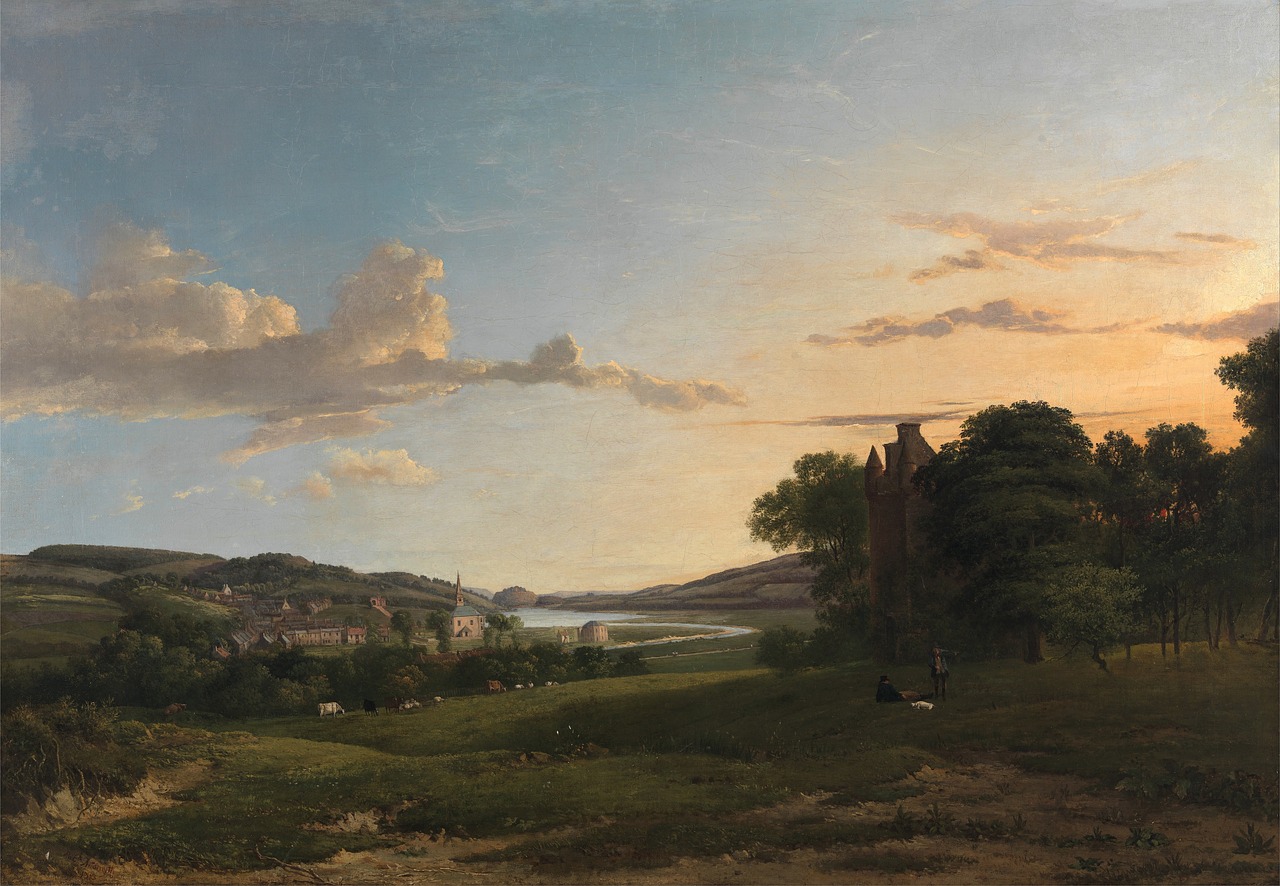
Brushwork Techniques
Claude Monet's brushwork techniques are nothing short of revolutionary, setting him apart from his contemporaries and defining the essence of the Impressionist movement. His style, characterized by short, quick strokes, was not merely a method of applying paint but a way of capturing the very essence of what he saw. Imagine standing in a lush garden, the sunlight filtering through the leaves, casting fleeting shadows on the ground. Monet's brushwork allows us to feel that moment, to experience the vibrancy of nature as if we were there with him. His approach was all about movement and spontaneity, inviting the viewer into a world that feels alive and ever-changing.
One of the standout techniques Monet employed was the impasto technique. This method involves applying thick layers of paint directly onto the canvas, creating a textured surface that plays with light and shadow. When you look closely at his works, you can see how the paint seems to leap off the canvas, creating a three-dimensional effect that draws the viewer in. The impasto technique not only adds depth but also enhances the emotional impact of his paintings. For instance, in his famous Water Lilies series, the thick application of paint gives a sense of serenity and movement, as if the flowers are gently swaying on the surface of the water.
Another crucial aspect of Monet's brushwork is his blending and layering techniques. He often applied multiple layers of paint to build up color and texture gradually. This method allowed him to create soft transitions between colors, evoking a sense of tranquility in his compositions. Think of a gentle sunset where the colors blend seamlessly from orange to pink to purple; Monet captured these subtleties beautifully. His ability to layer colors resulted in harmonious compositions that resonate with the viewer on an emotional level.
To further illustrate the impact of Monet's brushwork techniques, let’s take a look at a comparison of his methods versus more traditional approaches:
| Technique | Monet's Approach | Traditional Approach |
|---|---|---|
| Brush Strokes | Short, quick strokes that create movement | Long, smooth strokes for a polished finish |
| Texture | Impasto for depth and three-dimensionality | Flat application for a uniform surface |
| Color Application | Layering and blending for soft transitions | Single layer with defined edges |
Monet's brushwork was not just a technique; it was a philosophy. He believed in capturing the essence of a moment rather than focusing on meticulous details. This approach allows us, as contemporary artists, to embrace a sense of freedom in our own work. By experimenting with our brushwork, we can evoke emotions and experiences that resonate with our audience, much like Monet did over a century ago. So, next time you pick up a brush, consider how you can channel Monet's spirit of spontaneity and vibrancy into your own creations.
- What is the impasto technique? The impasto technique involves applying thick layers of paint to create texture and depth in a painting.
- How did Monet use color in his brushwork? Monet used layering and blending techniques to create soft transitions between colors, enhancing the emotional impact of his work.
- What makes Monet's brushwork unique? His use of short, quick strokes and impasto techniques allows for a sense of movement and vibrancy that captures the essence of nature.
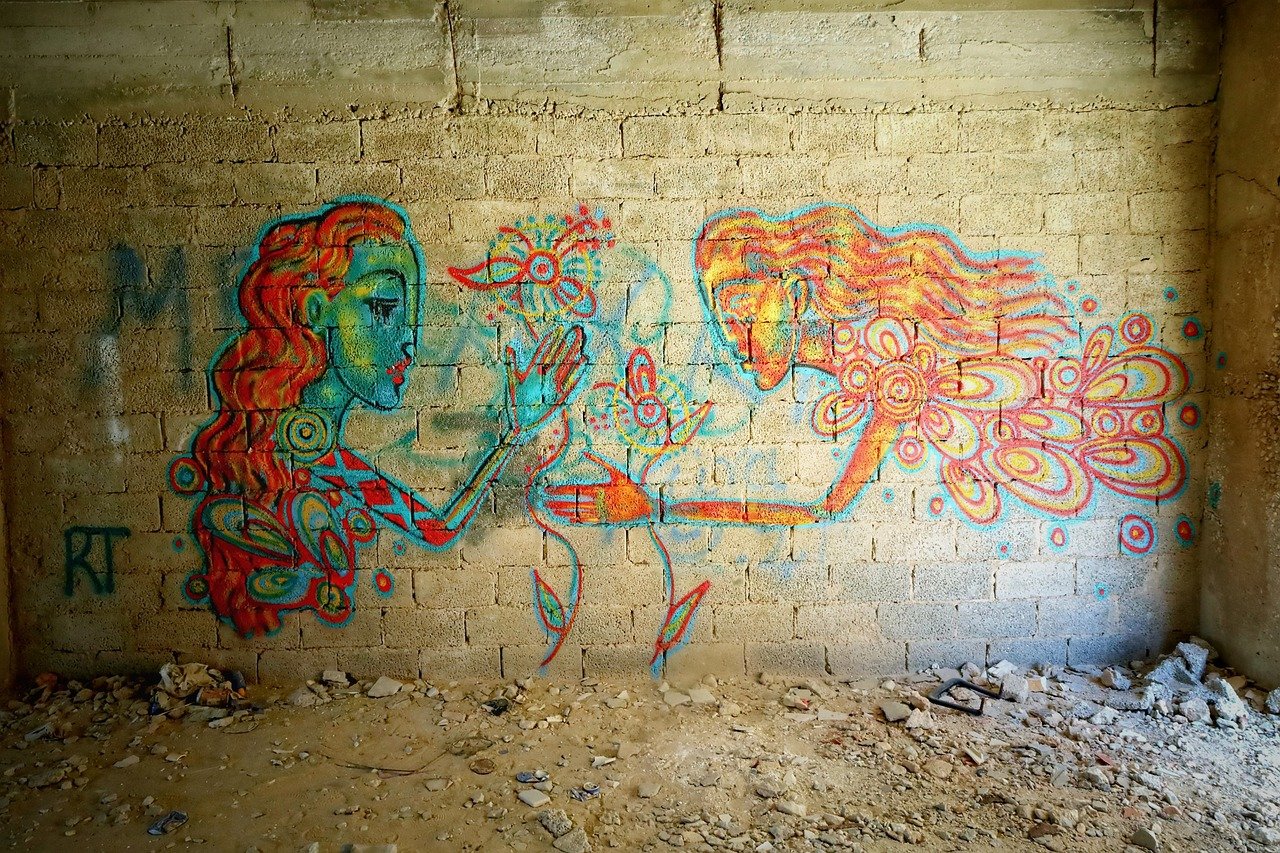
Impasto Technique
The is one of the defining features of Claude Monet's artistry, allowing him to create paintings that not only capture the essence of a scene but also engage the viewer on a tactile level. This technique involves applying thick layers of paint to the canvas, resulting in a three-dimensional effect that brings depth and vibrancy to the artwork. Imagine running your fingers over a painting and feeling the contours of the brushstrokes; this is the magic of impasto. It’s almost as if the painting is alive, inviting you to explore its textured surface.
Monet's use of impasto was not just about adding texture; it was a deliberate choice that enhanced the emotional impact of his work. By layering paint, he could manipulate light and shadow, creating a dynamic interplay that changed with the viewer's perspective. For example, in his famous series of Water Lilies, the impasto technique allowed him to depict the shimmering reflections on the water's surface, making the scene feel both ethereal and tangible.
Here are some key aspects of Monet's impasto technique:
- Layering: Monet would build up layers of paint, allowing each layer to dry before adding the next. This method created a rich, textured surface that seemed to vibrate with color.
- Brushwork: He often used a palette knife or a stiff brush to apply paint, which resulted in bold, expressive strokes that conveyed movement and energy.
- Color Interaction: The thick application of paint allowed colors to interact in ways that created luminosity, as light would reflect off the uneven surface, enhancing the painting's vibrancy.
Additionally, the impasto technique can be seen as a reflection of Monet's emotional state. The energy and spontaneity of his brushwork often mirrored his feelings about the natural world around him. When he painted the Rouen Cathedral, for instance, the thick, swirling strokes conveyed the transient effects of light on the building's façade, capturing not just a moment in time, but a feeling—a fleeting impression of beauty that was both profound and ephemeral.
In conclusion, Monet's impasto technique was not merely a method of applying paint; it was a way to express his vision and connect with viewers. By engaging the senses through texture and color, he transformed ordinary scenes into extraordinary experiences, inviting us to see the world through his eyes. If you're an artist looking to evoke emotion and depth in your work, experimenting with impasto could be your gateway to a more vibrant and dynamic artistic expression.
- What is the impasto technique? The impasto technique involves applying thick layers of paint to create texture and depth in a painting.
- Why did Monet use impasto? Monet used impasto to enhance the emotional impact of his work, manipulate light, and create a dynamic interplay of colors.
- Can I use impasto in my own paintings? Absolutely! Experimenting with impasto can add vibrancy and texture to your artwork, making it more engaging for viewers.
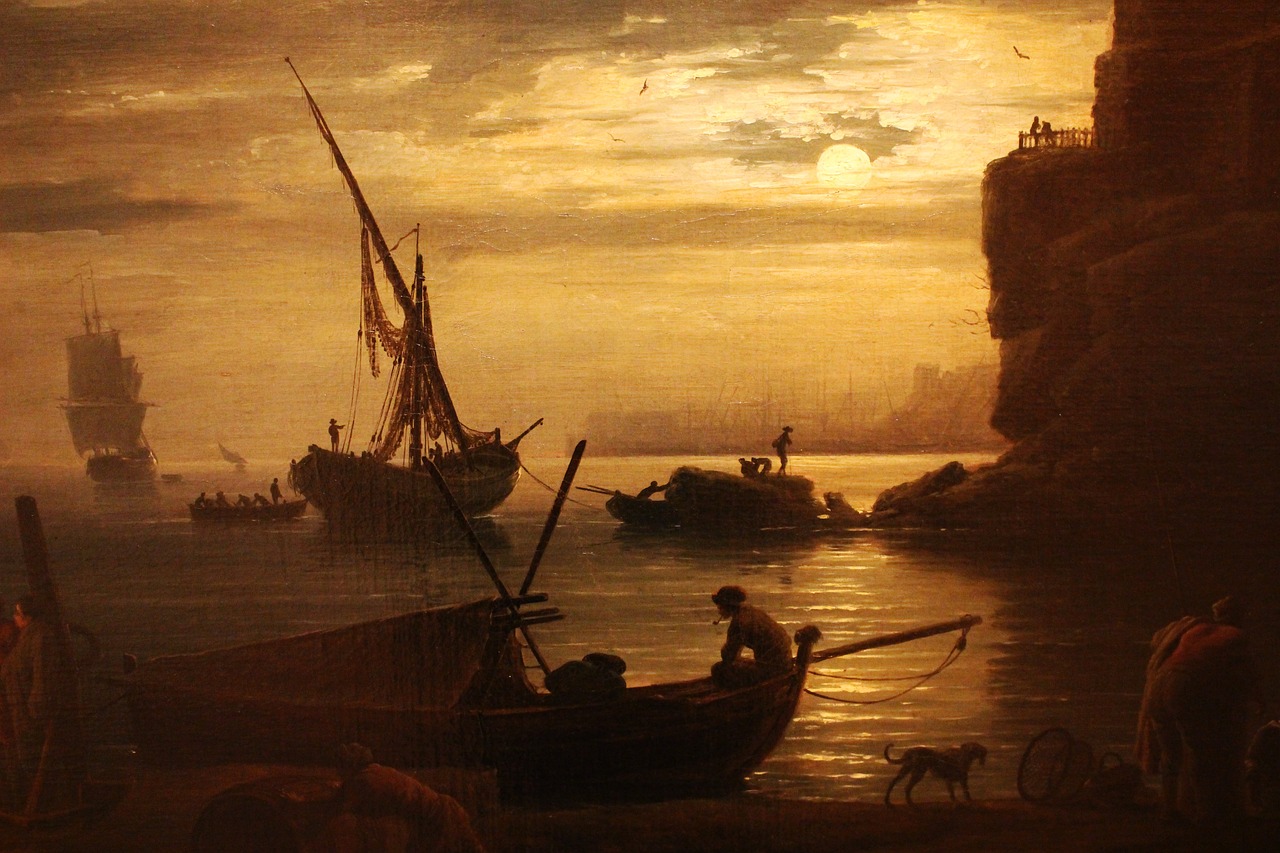
Blending and Layering
When we talk about in art, it's hard not to think of Claude Monet. His approach to these techniques was nothing short of revolutionary, allowing him to create paintings that felt alive and full of movement. Imagine standing in front of a Monet, where every brushstroke seems to whisper the secrets of nature. This magic was largely due to his mastery of blending colors and layering paint, which transformed flat canvases into vibrant landscapes.
Monet's blending technique involved the subtle merging of colors right on the canvas. Instead of meticulously mixing paints on his palette, he would apply colors side by side, allowing the viewer's eye to blend them from a distance. This method not only created a sense of depth but also added a dynamic quality to his work. For instance, in his famous series of Water Lilies, you can see how he layered various shades of blue and green, creating an ethereal reflection of the sky and water. The result? A harmonious composition that draws you in, inviting you to lose yourself in its tranquility.
Layering, on the other hand, was Monet's way of building texture and dimension. By applying thick layers of paint, known as impasto, he created a three-dimensional effect that made his paintings almost leap off the canvas. Imagine feeling the texture of the paint under your fingertips as you gaze at the vibrant colors. This technique not only added depth but also captured the play of light across the surface, making the artwork feel alive. In his later works, such as The Japanese Bridge, the layering technique became even more pronounced, allowing for a rich interplay of light and shadow.
To better understand Monet's blending and layering techniques, let’s look at a comparison of traditional painting methods versus Monet's approach:
| Aspect | Traditional Methods | Monet's Techniques |
|---|---|---|
| Color Mixing | Mixed on palette for uniformity | Applied side by side, allowing optical mixing |
| Texture | Flat application for smoothness | Thick layers (impasto) for dimension |
| Light Effects | Focused on detailed representation | Emphasized the fleeting effects of light |
Incorporating these techniques into your own artwork can be incredibly rewarding. Start by experimenting with different brush sizes and pressures to see how they affect your blending. Don't be afraid to layer colors; sometimes, the most beautiful effects come from unexpected combinations. Remember, art is about exploration and expression, just like Monet did. So grab your brushes and let the colors dance on your canvas!
- What is the impasto technique? Impasto is a painting technique where paint is laid on the canvas very thickly, allowing for texture and depth.
- How can I achieve a similar effect to Monet's blending? Try applying colors side by side on your canvas and let your eyes blend them from a distance.
- Why is layering important in painting? Layering adds dimension and can create a sense of realism and depth in your artwork.
Frequently Asked Questions
- What is Impressionism?
Impressionism is an art movement that emerged in the late 19th century, characterized by a focus on capturing light and the fleeting moments of everyday life. Artists like Claude Monet aimed to depict their first impressions of a scene rather than creating detailed, realistic representations.
- How did Monet use color in his paintings?
Monet was a master of color theory, using vibrant hues to evoke emotions and create depth. He often chose a limited palette to maintain harmony in his work, strategically mixing colors to achieve luminosity and vibrancy that brought his landscapes to life.
- What techniques did Monet use to capture light?
Monet's ability to capture natural light was revolutionary. He painted en plein air, allowing him to observe and depict changing light conditions in real-time. This approach enabled him to convey the atmosphere and mood of a scene effectively.
- What is the significance of brushwork in Monet's art?
Monet's distinctive brushwork, characterized by short and quick strokes, contributed to the texture and vibrancy of his paintings. This technique created a sense of movement and life, making the viewer feel as though they were part of the scene.
- Can you explain the impasto technique?
The impasto technique involves applying thick layers of paint to create a three-dimensional effect. Monet used this method to add depth and engage the viewer, allowing them to experience the texture of the paint as well as the image itself.
- How did Monet achieve softness in his paintings?
Monet's blending and layering techniques were key to achieving the softness that characterizes many of his works. By carefully layering colors and blending them, he created harmonious compositions that evoke tranquility and invite contemplation.



















